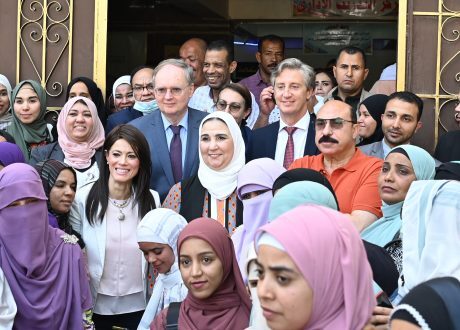
EBRD, EU, GCF allocate $4 m to boost green investments in Jordan
The European Bank for Reconstruction and Development (EBRD), the European Union (EU) and the Green Climate Fund (GCF) decided providing a financing ...

The Middle East could generate 50 million per annum (tpa) by 2030, with the global rate expected to vary 80m to 89m tpa by 2030, the Oxford Business Group (OBG) said in a recent report under the title “The Gulf looks to carbon capture and hydrogen to drive the energy transition”.
National oil companies (NOCs) in the Gulf are accelerating investment in carbon capture, utilization and storage (CCUS); hydrogen; and other green energies to make their activities less carbon-intensive and support the energy transition.
As Saudi Arabia aims to become a world leader in hydrogen production and export, Saudi Arabia already has functioning hydrogen projects as well as ambitious plans for expansion. In March it started construction on the $5bn wind- and solar-powered hydrogen plant at its NEOM mega-project, which will be the largest hydrogen plant in the world upon completion, producing 650 tons per day.
Last week, Saudi Aramco reached a deal with China’s Sinopec to develop CCUS and hydrogen while building a manufacturing complex at the King Salman Energy Park in eastern Saudi Arabia.
Last year, Prince Abdulaziz bin Salman Al Saud, minister of energy of Saudi Arabia, announced that the Kingdom aims to become the world’s largest hydrogen producer and is targeting 2.9m tpa by 2030 and 4m tpa by 2035.
Other Gulf countries, such as the UAE, Kuwait and Oman, are developing national hydrogen strategies.
In July, Abu Dhabi National Oil Company (ADNOC) signed a deal with France’s TotalEnergies to collaborate on CCUS and hydrogen. The deal will help ADNOC meet its goal of capturing 5m tpa of carbon by 2030, a six-fold increase from its current capacity of 800,000 tpa from its gas plants.
In May, ADNOC announced a new energy partnership with BP to develop hydrogen hubs in both the UAE and the UK. ADNOC is set to acquire a stake in BP’s H2Teesside hydrogen project, while BP will invest in ADNOC’s green hydrogen plant at Abu Dhabi’s Masdar. ADNOC is also looking at developing a green hydrogen supply chain with Japan.
Gulf NOCs could establish an early-mover advantage in green hydrogen production and export, potentially bringing in $200bn in revenue by 2050, according to a report published last year by consultancy Roland Berger and Dii Desert Energy, a public-private network focused on the energy transition.
Gulf NOCs are also making significant investment in hydrogen, a clean fuel and energy source that can be generated from hydrocarbons or green energy resources and used locally or exported.
The European Bank for Reconstruction and Development (EBRD), the European Union (EU) and the Green Climate Fund (GCF) decided providing a financing ...
Etisalat Egypt e& – a pioneering company in the field of communications and IT – ...
Egypt’s Ministry of Social Solidarity, the United Nations Development Program (UNDP) and the European Union ...


اترك تعليقا